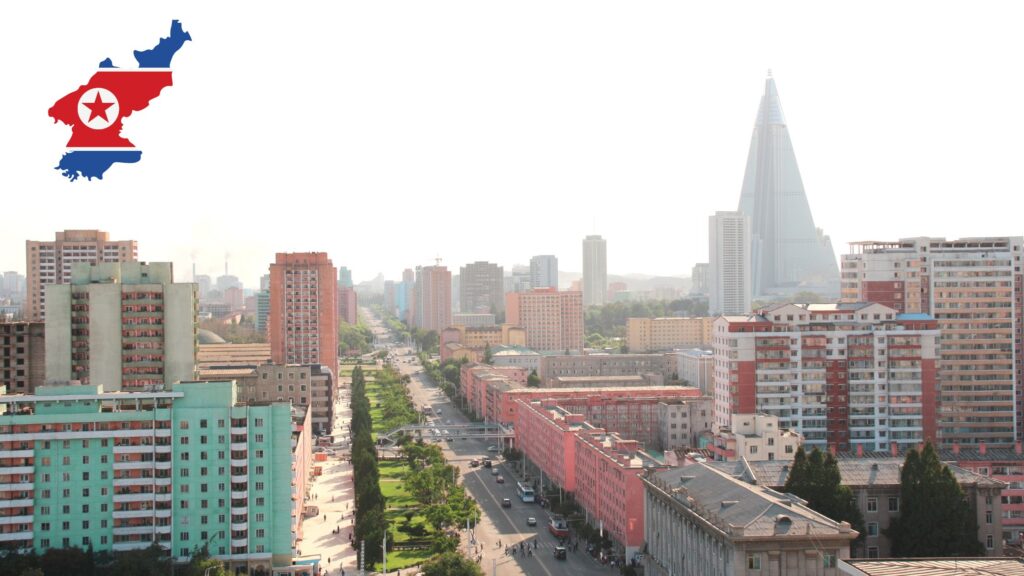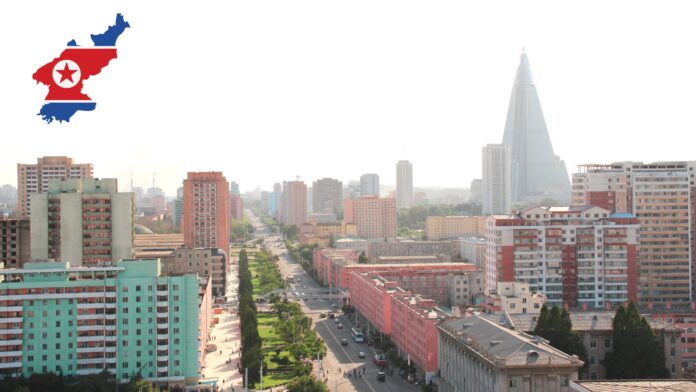Introduction of Travel Rules in North Korea
One of the world’s most secret countries can be seen in a special and intriguing light by visiting North Korea. For a secure and satisfying trip, it is important that you understand the strict rules governing travel. The goal of the article is to give visitors a thorough overview of how to navigate the challenges of traveling to North Korea so they are well-prepared and mindful of the local regulations and customs.
Table of Contents

Geographical Information
Location and Borders
The Democratic People’s Republic of Korea (DPRK), also known as North Korea, is a nation in East Asia that covers the northern half of the Korean Peninsula. To the north, it borders South Korea; to the south, it borders China and Russia. Its eastern and western underwater borders are the Sea of Japan and the Yellow Sea, respectively.
Climate and Best Times to Visit
North Korea has a continental climate with four distinct seasons. Summers (June to August) are hot and warm, whereas winters (December to February) are cold and dry. Because of the pleasant weather and bright skies, spring (March to May) and fall (September to November) are usually seen as the greatest seasons to visit.
Major Cities and Regions
- Pyongyang: is the nation’s capital, known for its towering buildings and political importance.
- Kaesong: is a historic city with an extensive artistic heritage, close to the DMZ.
- Mount Kumgang: is a picturesque alpine area renowned for its pristine splendor.
- Hamhung: Hamhung is a historical and culturally significant industrial city.
Cultural Insights
Brief History of North Korea
Following the Korean Peninsula’s division after World War II, North Korea was established in 1948, marking a significant turning point in its history. Kim Jong-un is the current ruler of the Kim dynasty, which started with Kim Il-sung and is currently led by his son, Kim Jong-il.
Local Customs and Traditions
Respect for its leaders and the group’s philosophy are highly valued in North Korea. It is imperative to honor local customs, such as bowing down before Kim’s family statues and refraining from talking politics. In public areas, visitors should also act politely and wear modest clothing.
Importance of Respecting Local Culture
Visitors should be warned that North Korean society is extremely close-knit, and that disobedience could have catastrophic effects. Respecting local traditions, laws, and tour guides’ directions is not only considerate but also necessary for one’s own safety.
Must-Visit Attractions
Pyongyang: Highlights of Pyongyang, the capital city
- Kim Il-sung Square: is a major square that is the site of military ceremonies and parades.
- Juche Tower: A memorial honoring the Juche philosophy.
Kim Il-sung and Kim Jong-il’s mausoleum is located at Kumsusan Palace of the Sun. - Arch of Triumph: An imposing memorial honoring the Korean people’s resistance against Japan.
Demilitarized Zone (DMZ)
A unique view of the closely guarded border between North and South Korea can be obtained by visiting the Demilitarized Area (DMZ). Important locations include multiple observation posts and the Joint Security Area, or Panmunjom.
Mount Kumgang
A well-liked location for nature tours and guided walks, Mount Kumgang is known for its breathtaking surroundings. It is well known for its hot springs, waterfalls, and beautiful scenery.
Kaesong
Kaesong, which was formerly the Goryeo Dynasty’s capital, is home to multiple historical attractions, including the King Kongmin Tomb and the Kaesong Koryo Museum. It’s a convenient and fascinating destination because of its close proximity to the DMZ.
Other Significant Historical Sites
- Mansudae Grand Monument: Kim Jong-il and Kim Il-sung are two enormous monuments located in Pyongyang’s Mansudae Grand Monument.
- USS Pueblo: Currently a museum, the American covert operations ship was taken prisoner in 1968.
- Mangyongdae: Today a pilgrimage site, this was Kim Il-sung’s birthplace.
Activities and Experiences
Guided Tours
Every visitor must take part in organized trips that have been authorized by the state. These are very organized trips led by knowledgeable guides who ensure respect for local laws and share insights into the history and way of life in North Korea.
Local Festivals and Events
Participating in local celebrations, like the Arirang Mass Games, which showcases impressive gymnastics and artistic performances, provides a deeper understanding of North Korean customs and the spirit of community.
Interaction with Locals
There may be opportunities for tourists to visit factories, farms, and schools, but interactions with locals are limited and monitored. These exchanges are planned to highlight North Korea’s accomplishments and way of life.
Travel Tips
Entry Requirements and Visas
Travelers must use a travel agency that has been approved to obtain a visa. It is not allowed to go independently. To prevent any problems at the border, make sure all paperwork is in order before leaving.
Transportation within North Korea
North Korea has strict rules on travel. The tour organizer arranges the majority of transportation, including flights to Pyongyang and intercity transfers. In general, tourists are not allowed to use public transportation.
Recommended Accommodation
Most accommodation is prearranged and includes stays in hotels in big cities such as Pyongyang. While these hotels may not have the same level of luxury as hotels in other nations, they do have the essential amenities.
Packing Essentials
Bring along any necessary medications, basic toiletries, and modest attire. While permitted, electronic gadgets will be inspected. Since photography is prohibited, bring a camera, but only use it sparingly.
Safety and Health Precautions
General Safety Guidelines
Amongst the world’s most tightly controlled societies is North Korea. Stay within your guide’s directions, stay away from delicate subjects, and stay aware of your location. Respect all local laws and traditions.
Health Risks and Vaccinations
Before leaving, find out from a healthcare professional which vaccinations are advised. Waterborne illnesses are a common source of health hazards, so stick to bottled water. Keep any prescription drugs and basic medical supplies on you at all times.
Emergency Contacts and Consular Support
In case of an emergency, travelers should be aware of the embassy or consulate’s contact information. Keep in mind that there are few diplomatic ties between North Korea and many other nations, so consular assistance may be limited.
Budget Planning
Typical Travel Costs
Because there are few choices for accommodation and required guided tours, visiting North Korea may be costly. Budget for airfare, travel fees, tour packages, and everyday expenses.
Currency and Exchange
Although North Korean won (KPW) is the official currency, travelers frequently use US dollars, euros, or Chinese yuan. Since it’s against the law to exchange money without authorization, official exchange locations should only be used.
Tips for Budget-Friendly Travel
Plan early for trips and look for packages that include food, lodging, and transportation to keep expenses under control. Maintain a budget and refrain from making needless purchases.
Local Cuisine
Overview of North Korean Cuisine
The utilization of local products and simplicity characterize North Korean cuisine. Rice, fruits and vegetables, and fermented foods like kimchi are all included.
Must-Try Dishes
- Kimchi: Pickled vegetables, typically made from radishes or cabbage.
- Naengmyeon: Tangy broth with cold buckwheat noodles.
- Bibimbap: a rice meal that is blended with vegetables and, at times, meat.
- Bulgogi: Beef marinated and grilled.
Dining Etiquette
When dining, be patient, don’t talk too loudly, and express gratitude for the food that is served. It is customary to share meals and to taste every dish that is offered.
Conclusion
Traveling to North Korea is a unique trip that calls for both thorough planning and an understanding mindset toward local regulations and customs. Travelers can have an interesting and safe trip to this mystery nation by being aware of and following the travel regulations. For a journey you will never forget, always remember to pack ahead, adhere to rules, and show respect for the local way of life.

